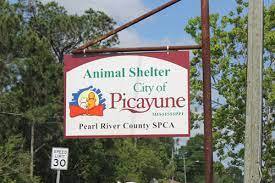DEQ and MSEG ask for recommendations
Published 7:09 pm Tuesday, July 18, 2006
Soon half of a billion American dollars will be used to fund waste water projects in Mississippi’s six coastal counties but first a plan has to be drawn up and submitted the U.S. Department of Housing and Urban Development.
To help determine how Pearl River County’s piece of the pie will be spent, representatives from the Mississippi Department of Environmental Quality and Mississippi Engineering Group held a meeting Monday to ask for local input.
“The main purpose of our meeting today is to hear from you,” said Jim Hurst, project manager for MSEG.
A main purpose of the Gulf Region Water and Wastewater Plan is to bring sewer services to the gulf coast region, Hurst said in his presentation. Hurst said homes in the area rely mostly on on-site sewer treatment facilities, which typically utilize septic tanks.
Research shows that of the 21,457 houses in Pearl River County, 15,953 rely on onsite facilities and an estimated 1,263 are failing units, causing waste water to seep into streams and ground water, Hurst said.
Population increases have been noted in Pearl River County, however Hurst said research shows that the population for all six coastal counties has only increased by 103 residents from 457,575 to 457,678. According to the research provided to Hurst, the current population of Pearl River County is about 59,000, an increase of only 7,000 since Hurricane Katrina.
District IV Supervisor Robert Thigpen wanted to know where Hurst got this information, to which Hurst replied the Federal Emergency Management Agency and other sources. Thigpen said he thought those numbers were too conservative since according to his estimates there are about 7,000 people living in FEMA trailers in his district alone.
“We question the numbers ourselves, but based on the data we’ve gathered…,” Hurst said.
However, Clovis Reed with MDEQ said that even though the numbers look doubtful, previous research for other areas came out fairly close.
Hurst said those research projects estimate the population in the county to reach 67,000 in 2010 and 91,000 in 2025.
It is estimated that the pre-Katrina number of 2.5 people per household has increased to about 4 people per household, increasing the water usage in those homes, Hurst said. Picayune Director of Operations Glade Woods said that the current sewer system for the city is working at more than capacity.
Tom Sanders with the City of Picayune said it took 100 years to get 5,000 houses in the city but the city expects 5,000 more in the next 10 years. The current Picayune sewer system needs to be overhauled in the next 18 months to accommodate that expected growth, Sanders said.
A two-part plan will be used to help get eligible systems up to par. The first will work to provide the infrastructure for waste water services for the next five years of growth, then the second will the infrastructure to provide services for the next 20 years of growth, Hurst said.
Members working on the Gulf Region Water and Wastewater Plan will need to submit their findings and the plan to HUD so money can be issued to begin infrastructure work, Hurst said. They are not sure when the funds will be released but expect it to be sometime at the end of this calendar year or the begging of the next, Hurst said.
Now the members of the Gulf Region Water and Wastewater Plan ask members of local water companies and residents to submit their ideas for waste water plans. Some major needs covered at the meeting included lift stations and main line work for Picayune. North Hill and Round Rock Subdivisions need main lines run to them, as covered in the Pearl River County Utility Authority Prioritized Project List handed out at the meeting.
PRC Utility Authority president Steve Lawler addressed the audience’s fears that the authority will come into certified areas of existing water companies to tell them what to do. Lawler said this will not happen, at least for now.
“We’re not doing this just for us and just for now, we’re doing this for our children and grandchildren,” Lawler said.



